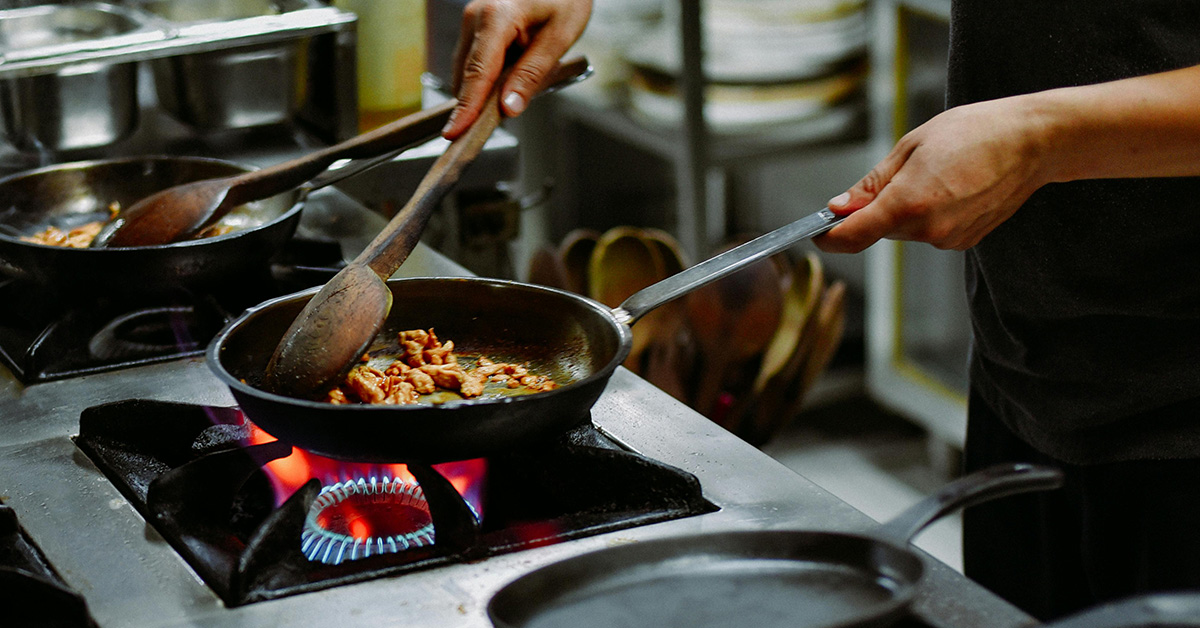Frying, a culinary art enjoyed worldwide, is more than just dunking food in hot oil. It’s a delicate dance between temperature, oil, and batter, a fascinating interplay of scientific principles that transforms raw ingredients into crispy, golden-brown delights. Understanding the science of frying is key to achieving perfect results every time, whether you’re making crispy French fries, succulent fried chicken, or delicate tempura vegetables. It’s a process that requires careful attention to detail and an appreciation for the chemical reactions that occur when food meets hot oil.
Temperature: The Critical Factor in the Science of Frying
Temperature is crucial for perfect frying. Too low, and food becomes greasy and soggy. Too high, and it burns before cooking through. Ideal frying temperatures generally range from 325°F to 400°F (160°C to 200°C), but thicker items like chicken thighs benefit from lower initial temperatures for even cooking, while thinner items like fish fillets can handle higher heat for a quick crisp. A deep-fry thermometer is essential for accurate temperature control. Maintaining the correct temperature ensures the ideal balance of crispiness and doneness. Avoid overcrowding the fryer, as this lowers the oil temperature. Fry in batches, allowing the oil to reheat between each.
Oil: The Medium of Transformation
The type of oil you choose plays a significant role in the science of frying. You need an oil with a high smoke point, meaning it can withstand high temperatures without breaking down and imparting off-flavors to your food. Oils like peanut, canola, vegetable, grapeseed, and avocado oil are all good choices for frying. The oil’s smoke point is crucial because once an oil reaches its smoke point, it begins to decompose, producing harmful compounds like acrolein, which can affect the flavor of your food and potentially pose health risks. The quality of the oil also matters; fresh oil will produce better results than oil that has been used repeatedly.
Batter: The Crispy Crust
The batter or coating significantly impacts the texture and flavor of fried food. Whether a simple flour dredge, seasoned breadcrumbs, or a complex batter, it creates a barrier, protecting the food and contributing to crispiness. Different batters yield different results. A light tempura batter creates a delicate crisp, ideal for vegetables and seafood, while a thicker batter provides a more substantial crunch, perfect for fried chicken. Understanding how the batter interacts with the hot oil, its cooking speed, and its adherence to the food is key. Cornstarch can enhance crispiness, while leavening agents create a lighter, airier texture.
The Maillard Reaction: The Magic of Browning
The beautiful golden-brown color and complex flavors of fried food are largely due to the Maillard reaction. This chemical reaction occurs between amino acids and reducing sugars at high temperatures, creating hundreds of different flavor compounds that contribute to the distinct taste and aroma of fried foods. The Maillard reaction is a key component of the science of frying and is responsible for the savory, roasted, and slightly nutty notes we associate with perfectly fried food. It’s a complex process that is influenced by temperature, moisture, and the specific ingredients being fried.
The Role of Moisture in the Science of Frying
Moisture content is another important factor to consider in the science of frying. Excess moisture in the food will cause the oil to splatter, creating a safety hazard, and can prevent the food from becoming crispy, as the moisture needs to evaporate before the crisping process can begin. That’s why it’s important to pat food dry before frying. However, some moisture is necessary for the Maillard reaction to occur. The key is finding the right balance. Brining or marinating can add moisture and flavor to food before frying, but it’s crucial to ensure the food is thoroughly dried before it hits the hot oil.
Putting the Science of Frying into Practice
Understanding the science of frying empowers you to achieve consistently delicious results. By paying close attention to temperature, choosing the right oil, and understanding the role of batter and moisture, you can elevate your fried food from ordinary to extraordinary. Experiment with different techniques and ingredients to discover your own perfect fried creations. Don’t be afraid to try new flavor combinations and explore different cuisines. The world of fried food is vast and full of possibilities.
